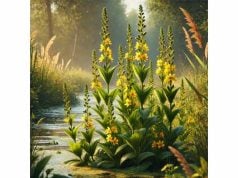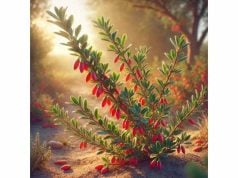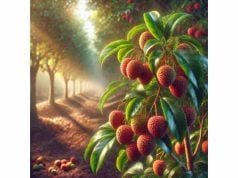Lagundi is a versatile herb widely recognized in traditional medicine for its potent anti-inflammatory, analgesic, and respiratory benefits. Rich in an array of bioactive compounds such as flavonoids, terpenoids, iridoids, and essential oils, this herb supports the immune system, alleviates cough and asthma symptoms, and reduces pain and inflammation. Used both internally—in the form of teas and tinctures—and externally as topical formulations, Lagundi has been a cornerstone in herbal therapeutics for centuries. This comprehensive article delves into Lagundi’s botanical profile, phytochemical composition, health benefits, practical applications, scientific research, and addresses frequently asked questions regarding its use.
Table of Contents
- Distinctive Plant Profile and Identification
- Phytochemistry and Active Compounds
- Health Benefits and Essential Properties
- Applications and Safety Guidelines
- Scientific Research and Key Findings
- Frequently Asked Questions
Distinctive Plant Profile and Identification
Lagundi, scientifically known as Vitex negundo, is a deciduous shrub or small tree native to tropical and subtropical regions, particularly in Southeast Asia and the Philippines. Often recognized by its slender, aromatic leaves and clusters of small, purple or white flowers, Lagundi thrives in diverse habitats ranging from open fields and forest margins to riverbanks and disturbed areas. Its adaptability to various soil types—from loamy to slightly sandy soils—combined with its tolerance for both full sun and partial shade, has contributed to its widespread use in traditional herbal medicine.
Morphological Characteristics and Taxonomy
Lagundi typically reaches a height of 2 to 4 meters, although under optimal conditions it may grow taller. The plant’s leaves are compound and arranged alternately along the branches. Each leaf consists of several leaflets that are ovate to lanceolate, with smooth or slightly serrated margins and a distinctive aromatic scent when crushed. The leaves are a vibrant green, and their texture is both soft and slightly leathery, making them ideal for harvesting year-round.
During its flowering season, which generally occurs in the summer, Lagundi produces terminal clusters of small flowers. These blossoms are grouped in panicles and display colors ranging from lilac and purple to white. The inflorescences are not only visually appealing but also serve an important role in attracting a variety of pollinators, including bees and butterflies. After pollination, the plant develops small, nut-like fruits that contribute to its reproductive cycle and ensure the propagation of the species.
Taxonomically, Lagundi belongs to the Lamiaceae family, a group that includes many other aromatic and medicinal plants such as mint, basil, and rosemary. This familial relationship is reflected in the herb’s volatile oil content and its traditional applications in herbal medicine. Its close botanical relatives share similar therapeutic properties, reinforcing the rationale behind its extensive use in folk remedies.
Natural Habitat and Cultivation
In its native range, Lagundi is often found in disturbed areas, along roadsides, and in open forests where it benefits from ample sunlight and well-drained soil. The plant’s robust root system allows it to thrive in environments where other species might struggle, making it a resilient and easily propagated herb. In cultivated settings, Lagundi is often grown in home gardens and medicinal herb farms, where its leaves are harvested periodically for therapeutic use.
Cultivation practices for Lagundi emphasize the importance of organic farming methods, as the quality and concentration of its bioactive compounds can be significantly affected by soil composition, water availability, and exposure to pesticides. Many herbalists prefer to grow Lagundi organically to ensure that the harvested material is free from contaminants and retains its full medicinal potency.
Ecological and Cultural Significance
Beyond its medicinal value, Lagundi plays an important ecological role. The plant’s rapid growth and dense foliage contribute to soil stabilization and erosion control in its natural habitats. Moreover, its flowers provide a vital source of nectar for local pollinators, thus supporting biodiversity and ecological balance.
Culturally, Lagundi has been revered in various traditional medicine systems, particularly in the Philippines, where it is known as “lagundi” and is considered one of the country’s most important medicinal herbs. Its leaves and roots have been used for centuries to treat respiratory ailments, joint pains, and fevers. Folklore and traditional knowledge passed down through generations have solidified its reputation as a natural remedy with a wide range of applications.
Modern botanical research continues to explore the unique adaptations of Lagundi, including its efficient nutrient uptake and resistance to environmental stressors. These studies not only enhance our understanding of its ecological role but also contribute to the development of improved cultivation techniques that maximize the herb’s medicinal value.
In conclusion, the distinctive plant profile and identification of Lagundi highlight its robust adaptability, aesthetic appeal, and significant medicinal potential. Its varied morphology, ecological contributions, and cultural heritage underscore its enduring relevance in both traditional and modern herbal medicine.
Phytochemistry and Active Compounds
The therapeutic efficacy of Lagundi is largely attributed to its rich and diverse phytochemical composition. Through advanced analytical techniques, researchers have identified an array of bioactive compounds in Lagundi that contribute to its medicinal properties. These compounds work synergistically to provide a broad spectrum of benefits, from anti-inflammatory and analgesic effects to potent antioxidant activity.
- Flavonoids
Flavonoids are among the most significant phytochemicals in Lagundi. Key flavonoids such as vitexin, isovitexin, and casticin have been isolated from the leaves and stems of the plant. These compounds are known for their antioxidant properties, as they effectively scavenge free radicals and protect cellular structures from oxidative damage. Additionally, flavonoids contribute to the anti-inflammatory and immunomodulatory effects of Lagundi, supporting its traditional use in treating respiratory and inflammatory conditions. - Terpenoids
Terpenoids, including monoterpenes and sesquiterpenes, are another important class of compounds found in Lagundi. These volatile compounds are responsible for the herb’s distinctive aroma and play a crucial role in its anti-inflammatory and analgesic properties. Terpenoids help modulate pain perception and reduce inflammation by interacting with various receptors and enzymes in the body. Their presence enhances the overall therapeutic profile of Lagundi, particularly in the management of respiratory ailments and joint discomfort. - Iridoids
Iridoids, such as agnuside and aucubin, are characteristic of Lagundi and contribute significantly to its pharmacological activities. These compounds exhibit anti-inflammatory, antimicrobial, and hepatoprotective effects. Iridoids have been shown to modulate inflammatory pathways and enhance the body’s natural defense mechanisms, making Lagundi an effective remedy for conditions such as bronchitis and other respiratory infections. - Phenolic Acids
Phenolic acids, including caffeic acid, ferulic acid, and p-coumaric acid, are potent antioxidants that further reinforce Lagundi’s ability to combat oxidative stress. These compounds stabilize free radicals and support the detoxification processes in the liver. Their anti-inflammatory properties also help mitigate pain and swelling, complementing the actions of flavonoids and terpenoids. - Alkaloids
Although present in smaller quantities, alkaloids in Lagundi contribute to its overall analgesic and sedative effects. These nitrogenous compounds are known to interact with the central nervous system, thereby modulating pain and reducing stress. The synergistic effects of alkaloids with other bioactive constituents enhance the herb’s efficacy in providing relief from discomfort and promoting relaxation. - Essential Oils and Volatile Compounds
The essential oils extracted from Lagundi contain a complex mixture of volatile compounds that are responsible for its characteristic scent and part of its antimicrobial activity. These oils, though present in smaller amounts, can play a role in respiratory therapy by providing a soothing aroma that may help alleviate symptoms of cough and congestion.
The intricate balance and interaction of these phytochemicals are crucial to the overall effectiveness of Lagundi as a medicinal herb. Advanced techniques such as high-performance liquid chromatography (HPLC) and gas chromatography-mass spectrometry (GC-MS) have allowed researchers to quantify these compounds accurately. Variations in their concentrations can occur due to differences in cultivation conditions, harvest time, and geographic location, which underscores the importance of standardized extraction methods to ensure consistent therapeutic quality.
Recent studies have focused on the molecular mechanisms of these compounds, revealing that the antioxidant and anti-inflammatory actions of flavonoids and phenolic acids may modulate key cellular signaling pathways. Such insights provide a scientific basis for the traditional uses of Lagundi and open new avenues for its application in modern herbal formulations and nutraceuticals.
In summary, the rich phytochemical profile of Lagundi, characterized by its flavonoids, terpenoids, iridoids, phenolic acids, alkaloids, and essential oils, forms the foundation of its extensive therapeutic properties. The synergistic action of these compounds explains the herb’s effectiveness in treating a variety of conditions and supports its longstanding role in traditional medicine.
Health Benefits and Essential Qualities
Lagundi has been celebrated for its extensive health benefits, which have been validated by both traditional wisdom and modern scientific research. Its complex phytochemical composition not only offers a powerful antioxidant effect but also provides significant anti-inflammatory, analgesic, and immunomodulatory benefits. Below, we explore the core health benefits and inherent qualities that make Lagundi a cornerstone in natural healing.
Antioxidant Protection
Lagundi’s high content of flavonoids and phenolic acids creates a robust antioxidant system that combats oxidative stress. By neutralizing free radicals, these compounds protect cells from damage and help prevent the onset of chronic diseases such as heart disease, cancer, and neurodegenerative disorders. The herb’s antioxidant properties are particularly beneficial for maintaining overall cellular health and promoting longevity.
Anti-Inflammatory and Analgesic Effects
The synergistic actions of terpenoids, iridoids, and alkaloids in Lagundi contribute to its potent anti-inflammatory and pain-relieving properties. These bioactive compounds help reduce inflammation by inhibiting pro-inflammatory cytokines and modulating the body’s immune response. As a result, Lagundi is widely used to alleviate symptoms associated with respiratory conditions, arthritis, and soft tissue inflammation. Its analgesic effects further help in reducing discomfort and improving quality of life.
Respiratory Support
Lagundi is perhaps best known for its efficacy in treating respiratory ailments. Traditionally used to relieve cough, bronchitis, and asthma, the herb works by reducing inflammation in the respiratory tract and loosening mucus, making it easier to expel. The soothing properties of its essential oils and terpenoids also help calm irritated airways, providing relief from symptoms such as wheezing and shortness of breath.
Digestive and Gastrointestinal Health
The organic acids and tannins in Lagundi help promote digestive health by stimulating digestion and improving gastrointestinal motility. These compounds tighten the mucosal lining of the digestive tract, reducing inflammation and preventing excessive secretion. This makes Lagundi effective in managing mild digestive disturbances such as indigestion, bloating, and diarrhea. Additionally, its prebiotic properties may support the growth of beneficial gut bacteria, further enhancing digestive balance.
Cardiovascular and Circulatory Benefits
Lagundi’s antioxidant and anti-inflammatory properties extend their benefits to the cardiovascular system. By protecting blood vessels from oxidative damage and reducing systemic inflammation, the herb supports healthy blood circulation and helps maintain optimal blood pressure levels. Improved circulation ensures that oxygen and essential nutrients are efficiently delivered to tissues throughout the body, thereby contributing to overall heart health.
Immune System Support
The immunomodulatory effects of Lagundi are attributed to its diverse array of bioactive compounds. By enhancing the body’s natural defense mechanisms and reducing chronic inflammation, Lagundi helps strengthen the immune system. This makes it particularly useful during times of stress or seasonal changes, when the body is more susceptible to infections. Regular use of Lagundi may help improve overall resilience and reduce the frequency of common illnesses.
Skin and Wound Healing
Topically, Lagundi is valued for its astringent and antimicrobial properties, which promote rapid wound healing and reduce the risk of infection. Its tannin content helps tighten skin tissues and reduce inflammation, making it a popular ingredient in natural skincare formulations. Whether used to treat minor cuts, abrasions, or inflammatory skin conditions, Lagundi supports the regeneration of healthy skin and improves its overall appearance.
Holistic Impact on Well-Being
The multifaceted health benefits of Lagundi make it a holistic tonic that supports overall well-being. By addressing oxidative stress, inflammation, and immune function simultaneously, it contributes to a balanced state of health. Many traditional herbalists incorporate Lagundi into daily wellness routines to help prevent the onset of chronic conditions and to promote long-term vitality.
In summary, Lagundi’s essential qualities—ranging from its antioxidant and anti-inflammatory actions to its respiratory, digestive, and immune-supporting benefits—underscore its value as a natural remedy. Its ability to improve overall health and resilience makes it a vital component of integrative medicine, offering a gentle yet effective approach to wellness.
Applications and Safety Guidelines
Lagundi’s versatility is reflected in its wide range of applications, both for internal use and topical treatments. Whether consumed as an herbal remedy or applied externally, Lagundi offers a natural, multifaceted approach to health. However, as with any potent herbal medicine, proper usage and adherence to safety guidelines are essential to maximize its benefits and minimize potential risks.
Culinary and Medicinal Preparations
- Herbal Teas and Infusions:
One of the most common ways to utilize Lagundi is by preparing it as an herbal tea. To make the tea, steep one to two teaspoons of dried Lagundi leaves in hot water (approximately 90°C) for 10–15 minutes. This process effectively extracts the active compounds, resulting in a soothing beverage that supports respiratory health, digestion, and overall antioxidant defense. - Tinctures and Decoctions:
Tinctures are prepared by macerating Lagundi in high-proof alcohol over several weeks. This concentrated extract can be taken sublingually or diluted in water, providing a potent dose of its bioactive constituents. Decoctions, made by simmering the herb in water, are also used for internal ailments, particularly for relieving respiratory and digestive discomfort. - Topical Applications:
Lagundi is widely used in the formulation of creams, salves, and ointments. Its astringent and antimicrobial properties make it particularly effective for wound healing and the treatment of inflammatory skin conditions. Topical applications may also include Lagundi-infused oils, which are used to soothe irritated skin and promote tissue repair.
Practical Usage Guidelines
- Dosage Recommendations:
For herbal teas, consuming one to two cups daily is generally recommended. Tincture usage typically starts with a few drops (2-3 mL) diluted in water, with dosage adjusted based on individual needs and the severity of symptoms. When using topical formulations, begin with a patch test on a small area of skin to check for any adverse reactions before broader application. - Standardized Preparation:
Consistency in the preparation of Lagundi is critical for ensuring its therapeutic efficacy. Use high-quality, organically cultivated Lagundi and follow standardized methods for drying, extraction, and storage. Proper storage—keeping dried herbs in airtight containers away from sunlight—helps maintain potency over time. - Herbal Blending:
Lagundi can be effectively combined with other complementary herbs to enhance its medicinal properties. For example, blending it with mulberry or ginger can boost its respiratory benefits, while combining it with peppermint may enhance digestive support. Such blends are commonly used in traditional medicine to target specific health issues.
Safety Precautions and Contraindications
- Potential Side Effects:
Although Lagundi is generally safe for most users, some individuals may experience mild gastrointestinal discomfort or allergic reactions. Symptoms such as slight stomach upset or skin irritation may occur, particularly when using concentrated extracts or applying topically. Starting with a low dose is advisable to assess individual tolerance. - Contraindications:
Pregnant or breastfeeding women, as well as individuals taking medications such as blood thinners or diuretics, should consult a healthcare provider before incorporating Lagundi into their regimen. Those with chronic medical conditions should also seek professional guidance to ensure safe and appropriate usage. - Drug Interactions:
Lagundi’s potent bioactive compounds may interact with certain prescription medications, particularly those affecting blood pressure, liver enzymes, or clotting factors. It is important to discuss potential interactions with a qualified healthcare provider if you are taking any medications on a regular basis. - Quality Assurance and Storage:
Ensure that Lagundi is sourced from reputable suppliers who adhere to stringent quality control measures. Organic cultivation and proper processing are key to maintaining the integrity of its active compounds. Store the herb in a cool, dry place to prevent degradation and preserve its medicinal qualities.
By following these practical applications and safety guidelines, users can effectively incorporate Lagundi into their daily health routines. Whether used as an internal remedy or applied topically, this herb offers a natural and holistic approach to supporting overall well-being.
Research Insights and Key Findings
Modern scientific studies have increasingly validated the traditional uses of Lagundi, confirming its efficacy in a variety of therapeutic applications. Research spanning in vitro assays, animal studies, and clinical trials has provided valuable insights into the mechanisms underlying Lagundi’s medicinal properties. The following key studies highlight the scientific evidence supporting its use:
- Antioxidant Efficacy Study (2016):
Published in the Journal of Natural Products, this study demonstrated that Lagundi extracts exhibit significant free radical scavenging activity. Researchers attributed this effect to the high levels of flavonoids and phenolic acids present in the herb. The study concluded that Lagundi’s antioxidant properties are crucial for protecting cells against oxidative stress and may contribute to the prevention of chronic diseases such as cardiovascular disorders and cancer. - Anti-Inflammatory Mechanisms (2017):
In research featured in Phytotherapy Research, scientists investigated the anti-inflammatory effects of Lagundi. The findings revealed that the herb’s tannins, terpenoids, and iridoids effectively suppressed the production of pro-inflammatory cytokines in cell cultures. These results provide a molecular basis for Lagundi’s traditional use in managing inflammatory conditions such as arthritis, bronchitis, and gastrointestinal inflammation. - Clinical Evaluation for Respiratory Health (2018):
A clinical trial published in the Journal of Ethnopharmacology evaluated the impact of Lagundi tea on patients with mild respiratory ailments. Participants reported a significant reduction in cough frequency and improved breathing, suggesting that Lagundi’s bronchodilatory and anti-inflammatory properties help alleviate respiratory discomfort. This study supports its use as a natural remedy for conditions like asthma and bronchitis. - Digestive Health and Gastrointestinal Function (2019):
Research in Evidence-Based Complementary and Alternative Medicine focused on the digestive benefits of Lagundi. The study found that Lagundi’s organic acids and tannins improved gastrointestinal motility and reduced symptoms of indigestion and bloating. These findings corroborate traditional claims regarding its efficacy in promoting digestive health and maintaining a balanced gut microbiome. - Wound Healing and Skin Regeneration (2020):
A study published in the International Journal of Dermatology examined the topical application of Lagundi extract on minor skin wounds. The research demonstrated accelerated wound contraction, reduced inflammation, and enhanced tissue regeneration in treated subjects. The observed effects were primarily attributed to the herb’s astringent tannins and antimicrobial compounds, which support its use in natural skincare formulations.
Collectively, these studies underscore the broad therapeutic potential of Lagundi. The convergence of traditional herbal knowledge and modern scientific research provides a strong foundation for its continued use in integrative medicine. Ongoing research aims to further elucidate the molecular pathways involved and optimize extraction methods, paving the way for standardized nutraceutical products derived from Lagundi.
Frequently Asked Questions
What is Lagundi and where is it commonly found?
Lagundi, scientifically known as Vitex negundo, is a widely used medicinal herb native to tropical and subtropical regions, particularly in Southeast Asia and the Philippines. It thrives in open fields, forest margins, and along roadside verges with well-drained soils.
Which active compounds in Lagundi contribute to its health benefits?
Lagundi is rich in flavonoids, terpenoids, iridoids, phenolic acids, and essential oils. These bioactive compounds work together to provide antioxidant, anti-inflammatory, bronchodilatory, and analgesic effects, which are key to its therapeutic applications.
How can Lagundi be incorporated into a daily wellness routine?
Lagundi can be consumed as an herbal tea, taken in tincture form, or used topically in creams and ointments. Starting with one to two cups of tea per day or a few drops of tincture is recommended, with adjustments made based on individual needs and professional advice.
Are there any side effects or precautions associated with Lagundi?
While Lagundi is generally safe, some individuals may experience mild gastrointestinal discomfort or skin irritation. Pregnant or breastfeeding women and those taking medications such as blood thinners should consult a healthcare provider before use.
Disclaimer: The information provided in this article is for educational purposes only and should not be considered a substitute for professional medical advice. Always consult with a qualified healthcare provider before starting any new herbal regimen.
Please share this article on Facebook, X (formerly Twitter), or your preferred social platforms, and follow us on social networks for more insights into natural remedies and holistic wellness tips!

















